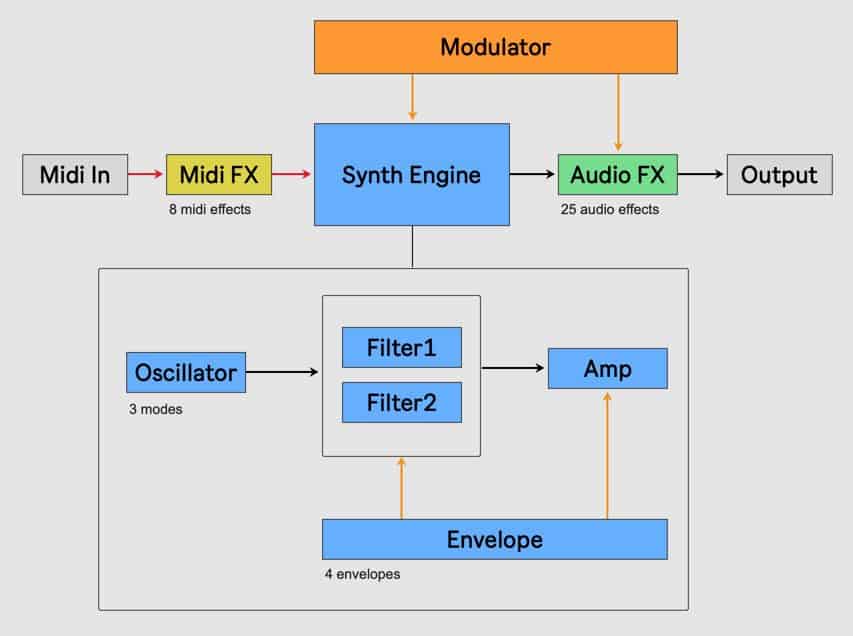HY-Poly – Subtractive Poly Phonic Synthesizer & Midi and Audio Effects
HY-Poly is a subtractive type polyphonic synthesizer with midi effects and audio effects. And many of synth and audio fx parameters can be modulated. You can create a wide variety of synth sounds with those midi/audio fx and modulations.
Signal Flow

Midi FX
There are 8 midi fx units available(Arpeggiator, Octave, Transpose, Harmonizer, Scaler, Velocity, Note Chance, Note Echo).

Audio FX
HY-Poly (Full version) supports 25 audio fx units available.

HY-Poly Features
- 3 oscillator modes
- Dual multi-mode filters
- Drag and drop modulation assignment
- 24 modulation sources
- 9 midi effect units
- 25 audio effect units
- Midi learn
- Preset browser
- Resizable interface
Pricing and Availability
There are two versions available a full-price version for $60 and a limited free. In the free Version you get to use 1 oscillator mode with a maximum number of voices is 4, there are no midi effect units, and you can use 5 audio effect units






![Working with DAW Templates [Cubase Pro 10.5] 18 maxresdefault 43](https://strongmocha.com/wp-content/uploads/2020/12/maxresdefault-43.jpg)



